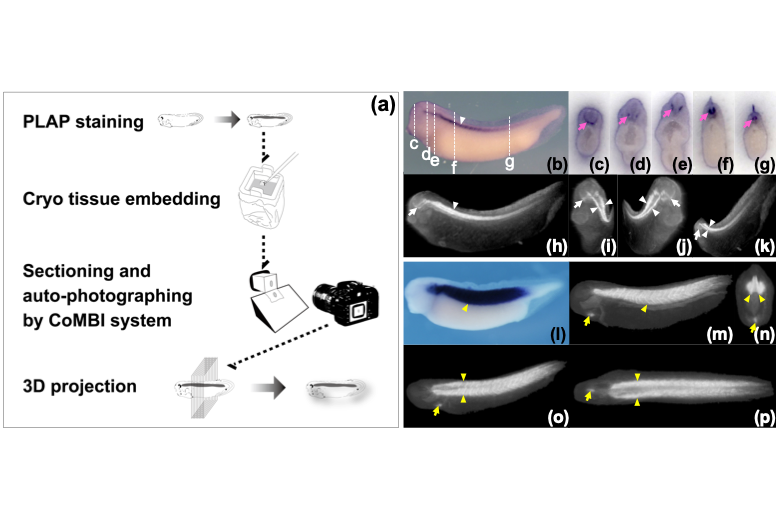We have developed a new transgenic reporter experimental system and three-dimensional imaging analysis system using Xenopus embryos
A paper co-authored by Yusuke Sakaguchi, a graduate student in the Evolutionary Developmental Genomics Research Group, and Igawa, was published in the journal Development Growth & Differentiation. Xenopus is an important model animal for developmental research. However, because the embryo contains a large amount of yolk and is opaque, three-dimensional imaging analysis using fluorescent proteins has been limited to the surface structure of the embryo, cultured tissue pieces, and tadpoles after embryonic development has completed. In this study, in order to solve this problem, we first expressed thermotolerant human placental alkaline phosphatase (PLAP) in the target tissue using a tissue-specific promoter, and then deactivated the endogenous alkaline phosphatase by heat treatment. , established a method for staining target tissues by reacting with alkaline phosphatase substrate. Next, we automatically photographed serial sections of embryos treated with this method and succeeded in constructing a three-dimensional image of the target tissue on a computer (Correlative Light Microscopy and Block-face Imaging (CoMBI) method). The “PLAP-CoMBI method” described above enables 3D digital imaging of Xenopus embryos, which was not possible with conventional methods using fluorescent proteins.
Sakagami, K., Igawa, T., Saikawa, K., Sakaguchi, Y., Hossain, N., Kato, C., Kinemori, K., Suzuki, N., Suzuki, M., Kawaguchi, A., Ochi, H., Tajika, Y., & Ogino, H. (2024). Development of a heat-stable alkaline phosphatase reporter system for cis-regulatory analysis and its application to 3D digital imaging of Xenopus embryonic tissues. Development, growth & differentiation, 66: 256-265. 10.1111/dgd.12919.

